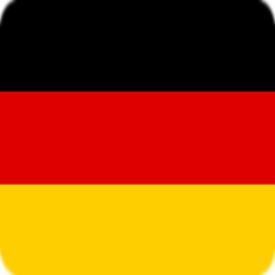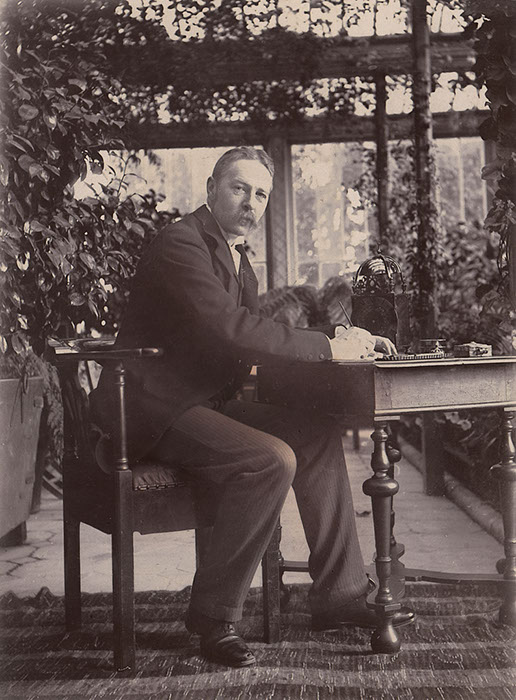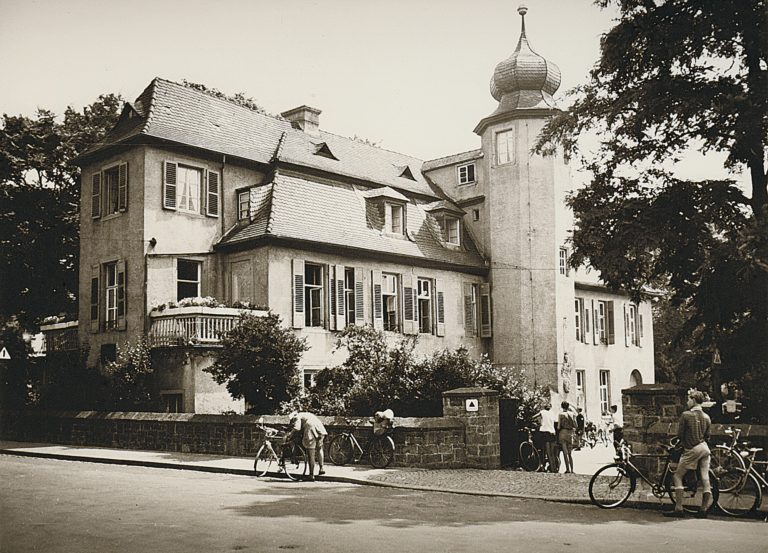 |
 |
 |
The building known as Schlösschen (or Handschuhsheim Schlösschen or Graham Schlösschen), literally meaning „little castle“, and the neighbouring Graham Park and Carl Rottmann Building present a spacious ensemble in the centre of Handschuhsheim that was once a small late-mediaeval seat of nobility in the village. The most striking feature is the stair tower dating back to the 17th century.
A long list of owners
A family called Knebel built a representative residence on this site in 1609. French troops burned down the residence in 1674, and only a few original features survived and were incorporated in the building that we see today – the tower with the onion dome roof, bearing the date 1609, and the small staircase tower on the reverse side of the building.
The Schlösschen and its land changed hands several times before the residence and part of the estate was bought in 1783 by the orphanage director Karl Rottmann. The Schlösschen remained in the hands of the Rottmann family until 1836, when it was sold to Carl Adolf Uhde, whose son sold it in 1861 to the Graham family. It has been in the ownership of the town of Heidelberg since 1916.

Schloesschen 1912 (photo: Tiefburg Archives)
Agricultural reform
It was a stroke of luck for Handschuhsheim that one of the owners of the Schlösschen let some of his agricultural land and buildings to a man called Stephan Gugenmus in 1769. Gugenmus worked his fields in a manner completely unknown to the farmers in Handschuhsheim. He abandoned the traditional three field crop rotation and growing of grain, and he kept his animals in barns. He introduced the growing of clover, hops and a plant called madder, whose roots were used as a source of red dye. The farmers in Handschuhsheim copied Gugenmus and learned how to grow vegetables successfully on a much larger scale. Something for which Handschuhsheim is famous today. Gugenmus is remembered by a street bearing his name and by a memorial plaque in the cemetery in Handschuhsheim.
Treasures from Mexico
Prior to purchasing the Schlösschen from Helene Rottmann in 1836, Carl Adolf Uhde had been a successful merchant in Mexico. From there he brought a magnificent and varied collection of exotic objects and exhibited them in one of the buildings of the Schlösschen. At the time, this collection was said to be the best of its kind in Europe and larger than in any museum in Mexico. This collection and the soirées organised by Uhde’s wife Eliza made the Schlösschen an attractive social gathering place, even for the nobility.
Carl Adolf Uhde died in 1856 and it had been his wish that his entire collection should be housed in Berlin. The Royal Prussian Museum purchased the collection at auction and it can now be seen at the Museum of Ethnology in Berlin-Dahlem.
Generous patron
The new owner of the Schlösschen after Uhde’s death was John Benjamin Graham, born in London in 1813. Graham had gone to Australia at the age of 26 and purchased shares in a copper mine, making him into a very rich man. Returning to England, he married Louisa Rymill in 1849, and in 1855 the Grahams moved to Frankfurt am Main, finding the air there much healthier than in London. They wanted a summer residence not too far from Frankfurt and so purchased the Schlösschen with its park. The Graham family spent the spring and summer in Handschuhsheim and the winter either in Frankfurt or England. The family became very well liked because of their friendliness and generosity. They opened the park created by Uhde to the public and soon their name rather than Uhde’s became associated with the park, now known as Graham-Park.

John Benjamin Graham (photo: Tiefburg Archives)
John Benjamin and Louisa Graham were generous patrons of the Christian pre-school in the village founded by Jakob Volk. Louisa Graham died in Handschuhsheim in 1870 and was buried in the cemetery here. John Benjamin died in England in 1876 and, following his instructions, his body was interred next to his wife.

Tea Pavilion (photo: Tiefburg Archives)
Their son Harry Robert continued to use the Schlösschen as a summer residence and to support the school. When World War I broke out, he returned to England, where he had been a member of Parliament for some time. To prevent dispossession by the German state, he entrusted his administrator Jakob Pollich with the sale of the Schlösschen, land and buildings. The town of Heidelberg bought the entire site from Pollich in 1916.
Youth Hostel
In 1921 the town of Heidelberg turned the Schlösschen into a youth hostel, which was extremely popular until the rise of National Socialism and the start of World War II.
The youth hostel reopened in 1949 and was so popular that rooms in the neighbouring Tiefburg castle were integrated into the youth hostel. A new youth hostel, able to cope with the ever-growing demand, was built near the zoo in 1956.

Youth Hostel (photo: Tiefburg Archives)
The Schlösschen today
At first, the town used the Schlösschen to accommodate refugees from East Germany and then from Hungary after the uprising there in 1956. For some years, it was used a school for children with special needs. From 1974 to 2003 it was home to the Municipal School of Music and Singing until the school moved to new premises in Bergheim, though it still uses some of the rooms in the Schlösschen as practice rooms.
The ground floor is now used as the citizens‘ office for the people of Handschuhsheim and the publishing company Winter has its offices in the upper floor. (bm)